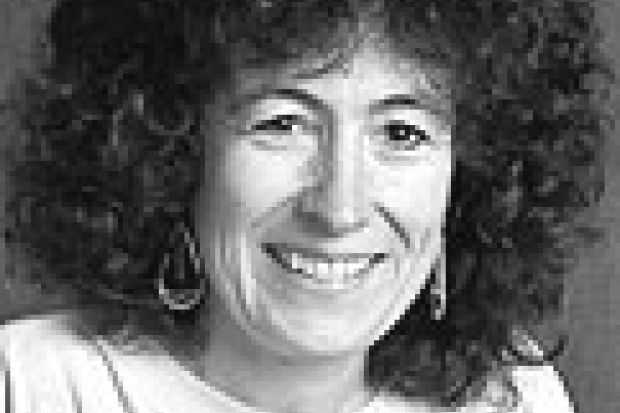Sharon Ann Holgate meets a Sussex lecturer who finds that the best way to understand special-needs children is to experience learning as they do.
Angela Jacklin has an effective way of showing trainee teachers how special-needs children experience the classroom. She asks students to look at an overhead and copy a row of six stick drawings of a tree, a bush, a house, another bush, a man and a dog.
All 120 start doodling. I begin with the bushes as they look the easiest to copy. I then draw in the tree, the stick man and the dog before finally completing the house.
When we have finished, Jacklin asks us to copy the word "colour", written in distinctly separate letters. "That didn't take so long, did it?" Jacklin says. "I just picked somebody at random and I watched how many times they looked up at the drawing. I stopped counting at 20."
"How many times did you look to copy the word?" she asks everyone. "Once," comes the chorus.
It is obvious now that the arrangement of little pictures mirrored the arrangement of letters in the word colour, with the two bushes in place of the "o" and the house representing the letter "l" and so on. But the order in which students drew the objects differed, with only about a third admitting to copying from left to right as they did with the word.
The activity is designed to show how some children approach the task of copying writing in the myriad ways that students approached the drawings. The children cannot necessarily remember or recognise words in a way most people take for granted.
Jacklin then asks the students to copy a sentence written below a rather jolly illustration. The letters look like Greek, even though the words do not seem to be. The students start laughing. "Come on," snaps Jacklin. Her sudden change of tone grates. The task looks impossible.
Some people gallantly try to copy the sentence before the overhead is whipped away and replaced by a similar one.
Several begin to twig that the pattern of the words is English. (I learn later that each English letter was replaced by its equivalent Greek letter). We are shown the first overhead again and when Jacklin starts to encourage us, we are soon chanting out the words.
"As a teacher you can be a very powerful person," Jacklin says. "I could alienate you very quickly and make you give up. But equally, when I put the second one up, I could make life easier for you. So, in the same way you can give children confidence that they can at least try."
The rest of the lecture is devoted to practical examples of how the special-needs code of practice can be successfully implemented.
Fascination with the way children learn led Jacklin into teaching. "We can stand and teach, but we don't actually know whether they've learnt anything," she says.
Having spent several years as a school teacher in mainstream and special schools, Jacklin did a doctorate on the process of transferring children between special and mainstream schools. This led to a lectureship in primary education at Sussex University.
She recalls her own transferral from school to university. "When I first came here, I felt somewhat de-skilled as a teacher," Jacklin admits. "With children, I was constantly assessing - are they losing concentration, are they following what I'm saying? But when you're faced with a group of students, you can't read them in quite the same way."
Register to continue
Why register?
- Registration is free and only takes a moment
- Once registered, you can read 3 articles a month
- Sign up for our newsletter
Subscribe
Or subscribe for unlimited access to:
- Unlimited access to news, views, insights & reviews
- Digital editions
- Digital access to THE’s university and college rankings analysis
Already registered or a current subscriber? Login
